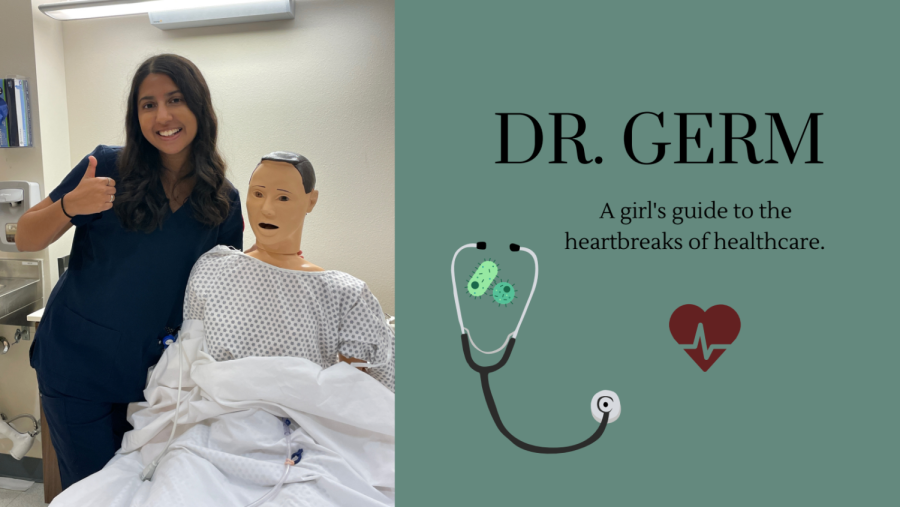Dr. Germ: the P in woman stands for pain
In this weekly blog, staff reporter Shannon Christian writes about the myths of healthcare and how it impacts students.
For many medical professionals, women’s pain doesn’t even exist.
Doctors across the globe are expected to consult and treat patients of all ages, genders, and backgrounds; however, it has become apparent that a specific demographic has been subject to a refusal of trust regarding their testimony of symptoms. Women, and specifically, teenage girls, are placed in immensely dangerous positions of having a compromised patient-physician relationship due to the fact that their physicians do not find alarm or pertinence in their symptoms, many medical professionals believing that these female patients are exaggerating the pain that they feel.
If a patient is not taken seriously by their physician, and their concerns are dismissed, this can prove to be fatal. Fatalities related to previously reported symptoms that were not further explored or documented are fatalities that could’ve been prevented; saving the lives of many teenage girls.
A study conducted by scholar Karen L. Calderone revealed that women who requested painkillers after a Coronary Bypass procedure, a very invasive heart surgery, were not given painkillers, when men who underwent the same procedure were provided with those painkillers. Whether this is attributed to doctor’s perceptions of women having higher pain tolerances, or refusal to provide narcotics to highly expressive patients, ignoring pain complaints of patients after major procedures can be a telltale sign of complications, most pertinently, infection. When taking into account that teenage girls are young women, they are even less likely to obtain sufficient treatment, or medication.
Countless harrowing stories have been shared as well, detailing neglect regarding diagnoses and treatments for pain, not just for supplying medication to girls all over the world. Menstrual pain, for example, is commonly dismissed due to the stigma of “hysteric” and hormonal women. This pertains to issues targeting mainly women such as hormonal and gastrointestinal conditions as well.
While these misjudgings of healthcare providers can be attributed as their own misogynistic behaviors, a portion of the blame can be placed on the misogyny existing within healthcare education. Most health science textbooks published before 1970 included diagrams of the male body, focusing on symptoms that affect a body that resembles the average male. By failing to include accurate pathophysiology related to a female body, as well as differences in women’s signs and symptoms, many physicians today may dismiss women’s concerns due to the fact that their education centered on the treatment of males.
Recent medical education includes information and training surrounding the female body, noting differences between that of males and females. However, the blatant failure to accurately treat female patients continues due to the fact that research regarding female patients has begun well after research has been conducted about the male body. Women’s brains were not even studied until the 1990s, meaning that they are relatively unexplored, leaving female patients with cognitive abnormalities vulnerable to an underdeveloped system of assessment and treatment.
As researchers attempt to update what is known about the female body and female patients alike, medical professionals, as well those who are surrounded by younger girls, should take note of their confessions of pain and discomfort. Doubt, in dire situations such as experiences of pain and illness, serves as a seed for danger and fatality. Pain should not be elusive; it exists in women of all ages and ethnicities, and should not be ignored, just as women’s voices shouldn’t be.

